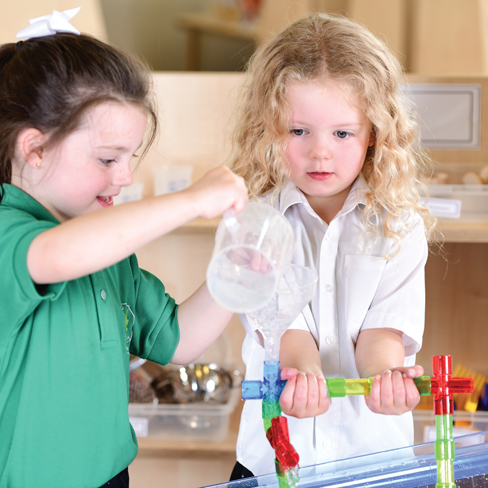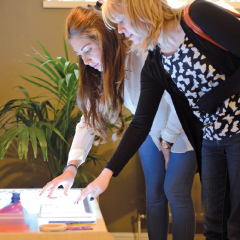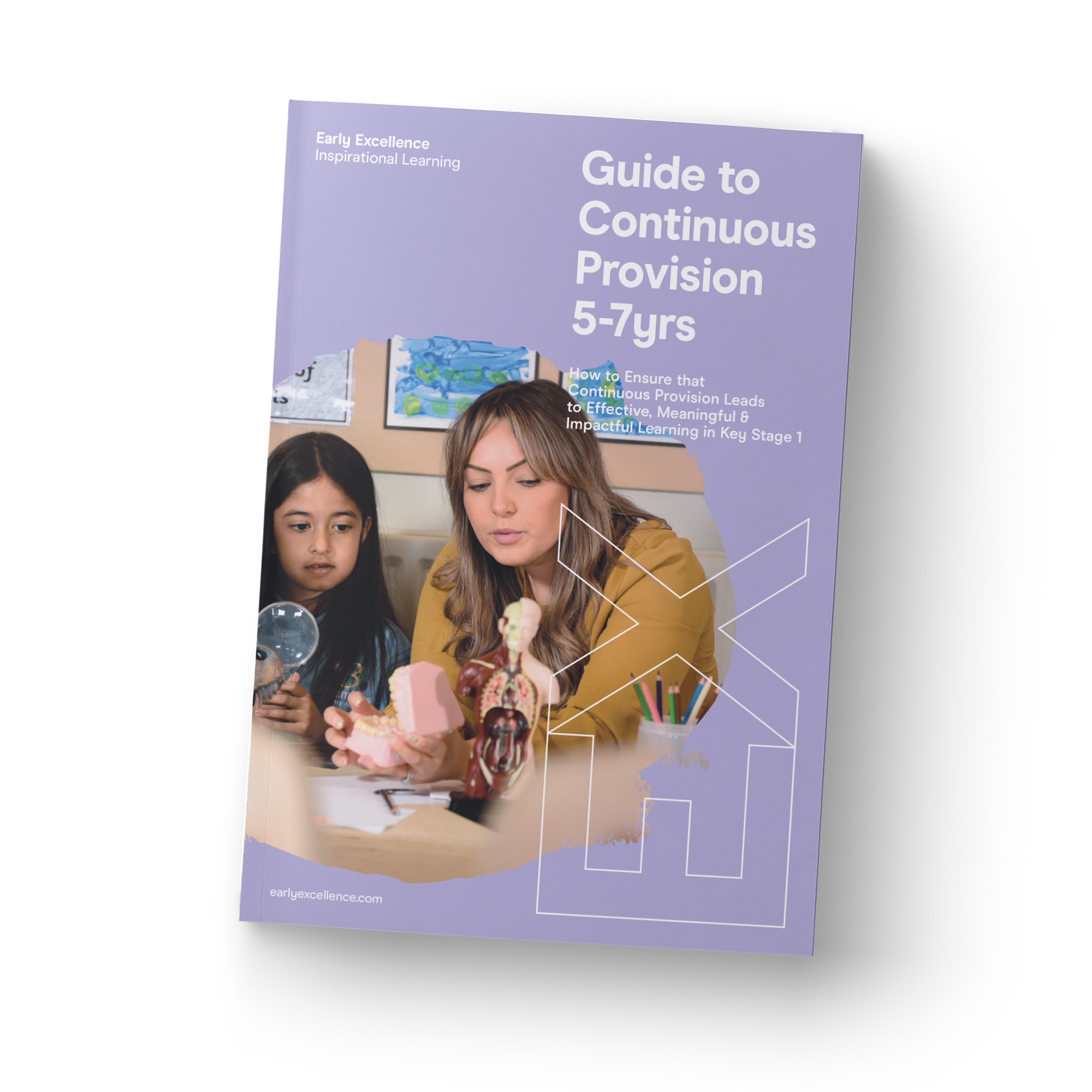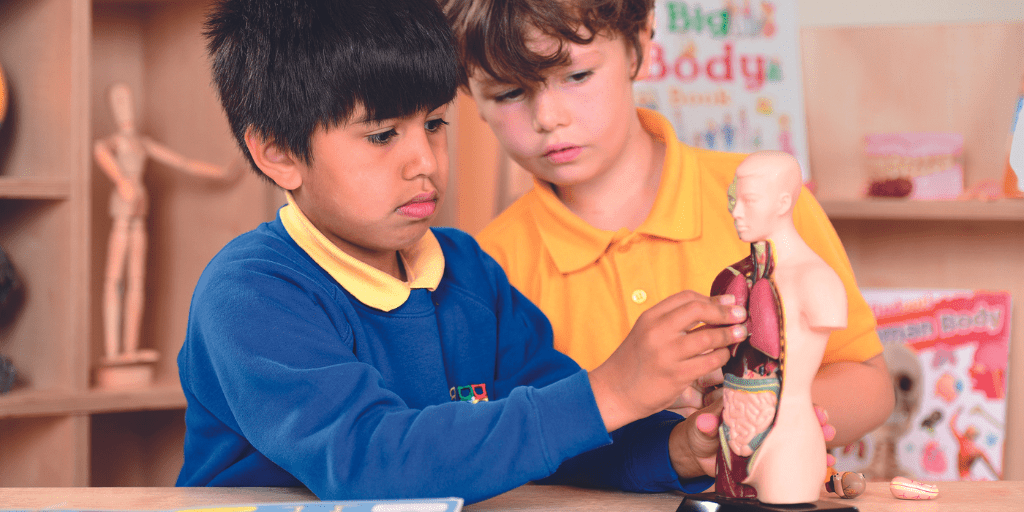Why is there such a difference between the settings we create for our children under 5 and those between the ages of 5 and 7? What are we basing our decisions on? Do our KS1 classrooms support the children we work with or do they reflect our views on classroom management and the demands, as we see it, of the National Curriculum?
This article is also available as a podcast:
Compare the learning environments of EYFS and KS1
When we compare the curriculum and practices of the Early Years Curriculum to that of the Key Stage 1 Curriculum we are often faced with fundamental differences in both style and content. Learning in the EYFS is active, play-based and hands on, centred around the child and their first hand experiences: this can be in stark comparison to the learning that occurs in Key Stage 1. Here, children may be expected to learn in the abstract, with many sessions led by an adult then followed up with a worksheet, for example. Throughout the EYFS, we celebrate the ‘unique child’ and adults respond to the individual needs and interests of their children. Once they move in to Key Stage 1 learning focuses on a particular objective which is then taught to all children at the same time over a period of time that is decided by the adult or the scheme that is being used.
When we compare the learning environments of our EYFS and Key Stage 1 learners we see a tremendous difference between the two. EYFS settings are designed to be an ‘enabling environment’: clearly defined areas resourced and organised to ensure maximum engagement and independent access. KS1 classrooms may be planned around the desire to provide each child with a place and a chair with any additional provision often placed at the edge for very occasional access. Many resources are stored in cupboards and drawers and are only accessed by or with an adult, when they are required.
What does the research on child development tell us?
Piaget (1952) describes four distinct periods of development, ranging from birth through to adulthood. The preoperational stage runs from 2 – 6 years and is the period during which children learn to use language, think symbolically, and represent their ideas using pictures and objects: they are highly active, learning through pretend play and first-hand experiences. It is not until around the age of 7 that major developmental changes take place; when children begin to think in the abstract (Bredekamp, 1987), develop the ability to plan ahead, to approach problems more logically and understand another’s point of view (Robinson, 2008). The key questions here then are, is our practice developmentally appropriate? Is our pedagogy suited to the children we teach or does content and coverage come first?
Continuous Provision in KS1 can be perceived as low level and lacking in challenge and were we simply to repeat the experience children have had in EYFS, or see the time children spend in provision as having little value other than as time-filler or a reward, this may very well be the case. However, when well-planned and linked not only to the interests of children but also carefully aligned to the demands of the National Curriculum, we can provide increasingly challenging and valuable learning opportunities throughout both Y1 and 2, enabling children to revisit and embed skills and knowledge whilst continuing to strengthen the effective learning behaviours they had when they left Reception
The key principles of continuous provision in KS1 remain the same:
- Start with the child – what are they interested in, what will they naturally want to do? Are there key areas of learning that need strengthening or revisiting?
- Prioritise areas of provision according to the space you have available and how effectively you can resource them
- Create a clearly defined space for each area of continuous provision
- Make sure that the resources you provide earn their place by providing lots of possibilities for learning
- Organise resources carefully and make them accessible to the children
- Consider the way in which you group, display and label the resources to provide opportunities for incidental learning.
However, the decisions we make must also reflect the expectations we have for our children by the end of the year and the Key Stage. What skills and knowledge do we want them to master and, therefore, what equipment and opportunities must we provide? This is key to ensuring in year progression and to creating an environment that supports all teaching and learning. Continuous Provision in Year 1 is not just an add-on, not just another thing to fit in alongside the curriculum: it is the curriculum.
Find Out More about Continuous Provision in Year 1

Consider the key principles of child development and recognise the importance of understanding how children learn as we explore how to plan provision that builds on previous experiences with our KS1 training.

Visit our KS1 classroom virtually where you will see examples of high-quality provision for children aged 5-7yrs and explore how this approach supports learning across the curriculum.

Our Guide to KS1 Continuous Provision is packed with detailed advice and also contains a full set of continuous provision planning guides for you to use and adapt.

